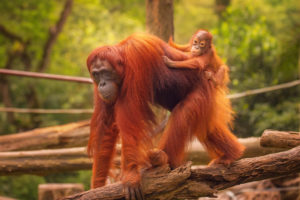Read the Following Selection
Read the following selection, or click on the play button below to listen aloud.
Growing Up
Humans Have Life Stages
Your body has changed a lot since you were a baby. And you will continue to grow and change as you get older. Scientists and doctors say that humans go through different life stages. They have given names and ages to these stages. Not all people go through the stages at the same time. Some grow faster than others; some grow slower. But we all go through the same stages.
Life Stages of Humans

Stage |
Age |
Description |
Infant/Toddler |
0 to 3 years |
• born helpless and is completely dependent on its mother for food for the first 2 years• learns to crawl, then walk• speaks in sentences by age 3 |
Child |
4 to 10 years |
• learns to take care of itself more and more• starts forming friendships outside of the family |
Adolescent |
11 to 18 years |
• a period of great growth; grows taller and heavier• begins to explore new ideas and situations |
Adult |
18 years and older |
• body has finished changing and growing |
Animals Have Life Stages, Too!
Humans are not the only animals that go through life stages. Some animals have more simple life stages. The young are like their parents, but smaller. They have two life stages—young and adult.
They grow to adults quickly, like a pet cat. Some animals have more life stages. They take a longer time to grow. One of these animals is the orangutan. Orangutans grow and change as they get older, just like you.
Life Stages of Orangutans

Stage |
Age |
Description |
Infant |
0 to 4 years |
• feeds on its mother’s milk for the first 2 years• stays attached to its mother constantly for the first 2 years |
Juvenile |
4 to 8 years |
• independent of the mother but stays in her territory• starts to look for their own food |
Adolescent |
Female: 8 to 15 yearsMale: 8 to 13 years |
• female makes contact with other adolescent females• male is independent and moves into new territories• male socializes with adolescent males and females |
Sub-adult |
Male only: 13 to 18 years |
• socializes less and spends more and more time alone• still growing; not a full-sized male yet |
Adult |
Female: 15 years and olderMale: 18 years and older |
• female starts to have babies and lives with her babies• male lives alone |
In the life stages of the orangutan, the juvenile stage is the same as the child stage in humans.
Now, show what you know!
Complete some questions about the reading selection by clicking “Begin Questions” below.









